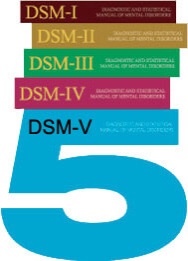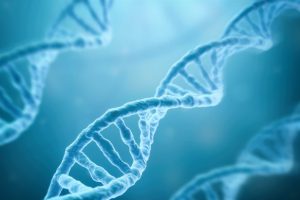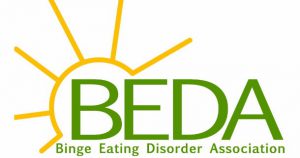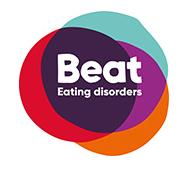Eating disorders are complex, debilitating disorders which are commonly misunderstood. They are a result of complex interactions between innate biological factors (metabolism, brain reward processing in response to food), current state (adolescence, pregnancy, age) and the social environment (availability of different foods). The interactions of these factors lead to fluctuating patterns in eating behaviours. When do these patterns become an issue which requires clinical attention? In this blog Jenny and Megan [Edit Lab placement students] outline the three most common eating disorders, along with their prevalence and heritability.
What is the difference between ‘normal’ eating behaviours and a diagnosis of an eating disorder?
Eating behaviours are extremely dynamic, with what is considered ‘normal’ eating varying both over time and between different social contexts. For example, Christmas is a time in which we may overindulge and later feel guilty about this, however this would not necessarily qualify for a disordered eating diagnosis. An eating disorder is a serious mental illness that involves persistent disordered eating behaviours. The way these manifest in a person’s phenotype can vary a lot. This could mean dramatically limiting the amount of food eaten, eating very large quantities all at once, or using unhealthy mechanisms to avoid weight gain, such as excessive exercise or misusing laxatives. The three main types of eating disorders in the Diagnostic Statistical Manual of mental disorders 5th edition (DSM-5; American Psychiatric Association, 2013) are presented below.

Types of eating disorders:
Anorexia Nervosa
Anorexia nervosa involves maintaining a significantly low body weight by limiting energy intake. As well as restricting the amount of food intake, individuals may maintain their low weight by other mechanisms, such as over exercising (known as the “restricting subtype”) or experiencing cycles of bingeing and purging (known as the “binge-eating/purging subtype”). The final essential diagnostic feature is a pathological fear of gaining weight, with a disturbance in self-perceived shape unduly affecting the individual’s self-esteem.
Such severe starvation also has extreme physical effects on the body, including reduced muscle and bone strength, dizzy spells, disrupted menstrual cycles in females, and heart failure – causing anorexia to have one of the highest psychiatric mortality rates (Newbridge Treatment for Eating Disorders).
Lifetime prevalence: Dahlgren and colleagues (2017) conducted a systematic literature review of 19 papers published between 2012 and 2017, which investigated the prevalence of DSM-5 based eating disorders. The reported lifetime prevalence rates (meaning how likely it is that you will experience something in your life) for anorexia nervosa in females ranged from 1.7% to 3.6%. Eating disorders most commonly affect young women aged 12-20, with a 10:1 female-to-male ratio (American Psychiatric Association, 2013). However, mental illness does not discriminate, and can affect anyone regardless of age, gender, or cultural background. In fact, it is thought about a quarter of those with an eating disorder are male. The lower prevalence rates measured among males could be related to stigma preventing males from coming forward and discussing their experiences (see Michela’s earlier blog post).
Age of onset: Symptoms typically first present during adolescence, however symptoms are also often first seen during young adulthood.
Heritability: Heritability (the extent to which individual differences may be explained by genetic differences) estimates for anorexia nervosa are around 55% (Bulik et al, 2006). In other words, it is estimated that around 55% of the variance across individual scores for anorexia nervosa are due to genetic differences between individuals. However, this estimate ranges widely across research. For example, Wade and colleagues (2001) found a heritability estimate of 48% unlike the 76% reported by Klump and colleagues (2001).Whilst the heritability estimate consensus for this area is 50-60%, the large confidence intervals reported by smaller studies mark a need for future genetic studies with greater power.
Genetic association studies: To date only one genomewide association study of anorexia nervosa (Duncan et al., 2017) has been published. The authors found one genetic variant significantly associated with anorexia nervosa, in a region previously found to be associated with autoimmune disorders. However, the study also found that the genetic correlations between anorexia and metabolic phenotypes (such as BMI) were just as strong as its genetic correlation with psychiatric disorders. The authors concluded that anorexia nervosa may be both a psychiatric and metabolic disorder. Whether this is the case for the other eating disorders is currently unknown.
Bulimia Nervosa
It may be common for people without disordered eating to overindulge in food, or choose to eat more than usual in some circumstances. However in the case of bulimia nervosa, individuals are caught in a distressing cycle of uncontrollable binge episodes, followed by unhealthy compensatory behaviour such as purging (self-induced vomiting, misuse of laxatives, diuretics, or enemas). These binge episodes can dominate aspects of daily life, causing great distress, and up to 88% of adolescents with bulimia also present with other mood or anxiety disorders including major depressive disorder (Swanson et al., 2011).
A common misconception is that any individual who is making themselves vomit is bulimic. This is not always the case. For example, many anorexia patients also exhibit binge/purging behaviours, however their low BMI results in a diagnosis of anorexia. With bulimia, an individual may exhibit binge/purging behaviours but maintain a BMI within the normal range, making it difficult to spot.
Lifetime Prevalence: Dahlgren and colleagues (2017) also assessed the lifetime prevalence of Bulimia Nervosa. They reported a lifetime prevalence in the range of 0.59 – 0.6%, which is far smaller than that of anorexia nervosa. Diagnoses of bulimia nervosa are again far less common in males than in females, with an approximately 10:1 female-to-male ratio (American Psychiatric Association, 2013).
Age of onset: Bulimic symptoms start most commonly in young adulthood, but can also first present during adolescence.
Heritability: Heritability estimates for Bulimia Nervosa have been reported between 54-83% (Thornton et al., 2010)
Binge-Eating Disorder
In 2013, the 5th edition of the DSM was released, which introduced binge-eating disorder (BED) as an independent diagnosis (American Psychiatric Association, 2013). Individuals with BED experience an extreme lack of control over their eating, leading to periods of extreme food consumption. During these periods, individuals find it very difficult to stop eating once they have started. This means that periods of overeating are often followed by guilty thoughts and feelings of embarrassment.
BED can often lead to obesity, although not all individuals are overweight or show a sudden weight gain. Those who are overweight as a result of BED may experience medical complications associated with obesity. Examples include high blood pressure, high cholesterol and Type II diabetes (Eating Disorder HOPE).

Lifetime Prevalence: Dahlgren and colleagues (2017) found that across the 19 articles, the point prevalence for BED ranged from 0.62% (females only) to 3.6% (male and female combined). This condition tends to be more common in adults than adolescents; however again it is a disease that can affect anyone of any background, age or gender. It is reported that 3.5% of women will experience BED at some point in their lives, compared to 2% men. This is a much more even male:female ratio in comparison to anorexia and bulimia. (BEDA, 2018).
Age of onset: Research by Barry and colleagues (2001) reported that people with BED usually present in their 40s and as many as a quarter of BED patients are male.
Heritability: Javaras and colleagues (2008) reported a BED heritability estimate of 41%, whilst Reichborn-Kjennerud and colleagues suggested it could be as high as 57%.
There is no single reason why people will develop an eating disorder, but rather it is a complex interaction between many genetic, environmental and psychological risk factors. Recently, research initiatives into the genetics behind eating disorders are seeking to investigate heritability (the extent to which individual differences may be explained by genetic differences) – which is a much needed focus point due to the vast range of heritability estimates mentioned above. Understanding the genetic mechanisms behind eating disorders is important, to help us better understand the biological framework of these disorders.
Available Treatments
Full recovery from an eating disorder takes time and can be different for everyone, however treatment is possible. As well as the physical and mental effects of eating disorders, these illnesses also have significant effects on people’s relationships, work and education. Such emotional consequences are often not acknowledged but can have a severe impact on an individual’s support network, and consequently their help seeking behaviour.
Moreover, eating disorders can be extremely difficult to spot. If weight levels remain fairly stable (as in the case of bulimia), then it is important to be aware of other indicative signs of eating disorders. These may include: mood changes, secrecy around food, self-conscious eating, irritability, and extreme feelings of guilt and anxiety.
Eating disorders are complex interactions between psychological and metabolic factors, which is why many treatments try to address both physiology and thought processes. There are currently no medications that target the core symptoms of anorexia or bulimia which is why many treatments currently are often not about the food itself. Instead they target the underlying thoughts and motivations behind the behaviour. Cognitive behavioural therapy (CBT), for example, involves speaking with a specialist therapist to create individual programmes in weekly sessions to target feelings as well as help making healthy food choices (see more information about CBT in our earlier C post). As well as some kind of talking therapy, treatment may involve regular health checks, to assess the impact the eating disorder is having on physical health.
 It can be very difficult to ask for help, however if you are at all concerned about your eating habits you should talk to your GP. GPs can provide a lot more information and guidance, including information on the numerous other eating disorders that are not discussed in this post (such as pica and rumination disorder). You can also talk to Beat, the UK’s eating disorder charity, on their adult helpline: 0808 801 0677, student helpline: 0808 801 0811 or youth helpline: 0808 801 0711. Alternatively, you can get in contact via their online chatroom services.
It can be very difficult to ask for help, however if you are at all concerned about your eating habits you should talk to your GP. GPs can provide a lot more information and guidance, including information on the numerous other eating disorders that are not discussed in this post (such as pica and rumination disorder). You can also talk to Beat, the UK’s eating disorder charity, on their adult helpline: 0808 801 0677, student helpline: 0808 801 0811 or youth helpline: 0808 801 0711. Alternatively, you can get in contact via their online chatroom services.
References
American Psychiatric Association. Diagnostic and statistical manual of mental disorders DSM-5. 5th ed. Washington, DC: American Psychiatric Association; 2013.
Dahlgren, C. L., Wisting, L., & Rø, Ø. (2017). Feeding and eating disorders in the DSM-5 era: a systematic review of prevalence rates in non-clinical male and female samples. Journal of eating disorders, 5(1), 56.
Duncan, L., Yilmaz, Z., Gaspar, H., Walters, R., Goldstein, J., Anttila, V., … & Hinney, A. (2017). Significant locus and metabolic genetic correlations revealed in genome-wide association study of anorexia nervosa. American journal of psychiatry, 174(9), 850-858.
Javaras KN, Laird NM, Reichborn-Kjennerud T, Bulik CM, Pope HG, Jr, Hudson JI. (2008) Familiality and heritability of binge eating disorder: results of a case-control family study and a twin study. The International journal of eating disorders. 2008;41:174–179
KLUMP, K., MILLER, K., KEEL, P., McGUE, M., & IACONO, W. (2001). Genetic and environmental influences on anorexia nervosa syndromes in a population–based twin sample. Psychological Medicine, 31(04). http://dx.doi.org/10.1017/s0033291701003725
Mayhew, A. J., Pigeyre, M., Couturier, J., & Meyre, D. (2018). An evolutionary genetic perspective of eating disorders. Neuroendocrinology, 106(3), 292-306.
Reichborn-Kjennerud T, Bulik C, Tambs K, Harris J. Genetic and environmental influences on binge eating in the absence of compensatory behaviours: a population-based twin study. International Journal of Eating Disorders. 2004;36:307–314
Swanson, S. A., Crow, S. J., Grange, D. L., Swendsen, J., & Merikangas, K. R. (2011). Prevalence and correlates of eating disorders in adolescents: Results from the National Comorbidity Survey Replication Adolescent Supplement. Archives of General Psychiatry, 68(7), 714–723.
Thornton, L., Mazzeo, S., & Bulik, C. (2010). The Heritability of Eating Disorders: Methods and Current Findings. Behavioral Neurobiology Of Eating Disorders, 141-156. http://dx.doi.org/10.1007/7854_2010_91
Wade, T., Bulik, C., Neale, M., & Kendler, K. (2000). Anorexia Nervosa and Major Depression: Shared Genetic and Environmental Risk Factors. American Journal Of Psychiatry, 157(3), 469-471. http://dx.doi.org/10.1176/appi.ajp.157.3.469


